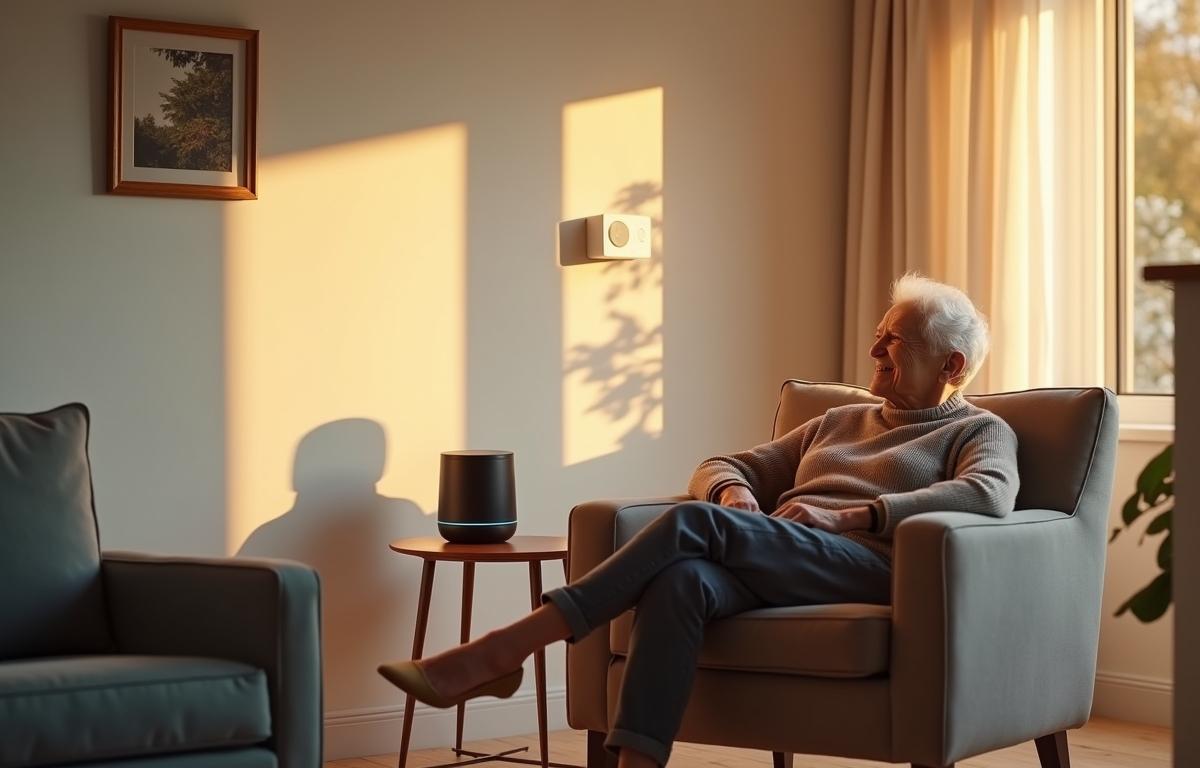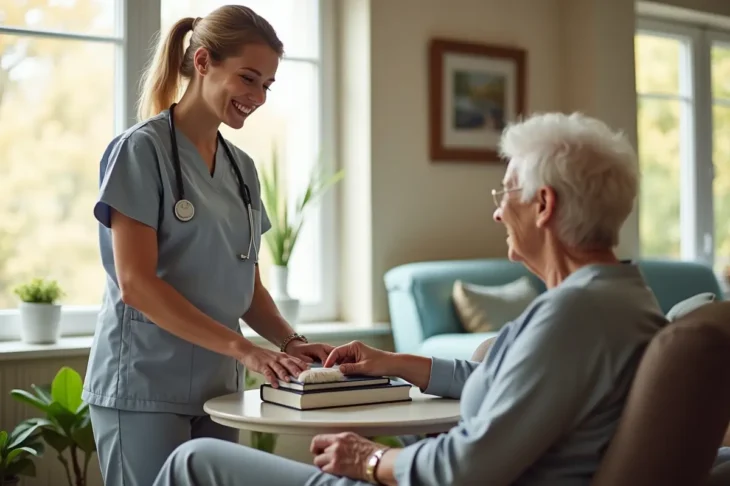
Senior Smart Homes and How Technology Is Making Aging Safer
Smart Homes are transforming how older adults experience comfort, safety, and independence within their living spaces. Today’s innovative home automation solutions include a variety of IoT devices, smart lighting, and connected appliances that simplify tasks and offer reassurance to both seniors and their loved ones. By harnessing wireless technology and modern tools such as voice control, these residences allow aging family members to maintain a sense of freedom without compromising on security or support.
Contents
- 1 Key Features That Boost Safety and Independence
- 2 How Smart Lighting and Energy Management Help Seniors
- 3 Embracing Smart Security Systems at the Front Door
- 4 The Role of Voice Control and Smart Speakers in Daily Life
- 5 Innovative Approaches to Health and Safety
- 6 Smart Hubs as Central Control Points
- 7 Fostering Energy Efficiency and Comfort
- 8 Final Thoughts
Key Features That Boost Safety and Independence
Smart security systems serve as a primary layer of protection. From motion-activated cameras to door sensors that send alerts, these solutions help families stay informed about daily activities. In many cases, remote access features combine with home monitoring platforms, allowing caregivers to check in or receive notifications if something seems amiss. Safety sensors located throughout hallways, kitchens, and bathrooms also reduce the likelihood of accidents.
The use of smart speakers stands out as a powerful ally for older adults. By issuing verbal commands, they can interact with various home automation features. For example, voice control can adjust a smart thermostat, change lighting levels, or even lock doors without the need to physically move around the house. This integration of technology boosts overall convenience and fosters a sense of self-reliance.
The Value of Gesture Control
While voice assistants offer user-friendly ways to manage connected devices, gesture control can be equally impactful. For individuals with hearing challenges or speech difficulties, waving a hand, nodding, or performing simple movements can trigger tasks like turning on the television or dimming lights. These gesture-based interfaces merge seamlessly with the broader Internet of Things landscape, opening doors to more inclusive daily routines that prioritize accessibility.
Health Monitoring and Peace of Mind
Health monitoring solutions have become essential in a Digital Home setting, particularly for seniors dealing with chronic conditions. Devices that measure heart rate or blood pressure can sync with mobile apps and notify caregivers if readings move beyond a safe range. Such systems highlight how the Internet of Things extends beyond mere convenience to provide tangible, life-enhancing benefits. The collected data also aids healthcare professionals in adjusting medications or treatments promptly, ensuring a proactive approach to wellness.
How Smart Lighting and Energy Management Help Seniors
A well-lit home is crucial for older adults, as improper lighting can increase the risk of falls. Smart lighting takes illumination to the next level by offering automated schedules, motion sensors, and intensity adjustments. Lights in hallways or staircases can activate just as someone starts walking, preventing mishaps. Additionally, seniors can customize brightness settings to combat eyestrain while reading or working on hobbies.
Energy management is another significant advantage. Smart thermostats learn usage patterns and maintain comfortable temperatures while keeping energy consumption in check. This combination of features improves energy efficiency throughout the home. For seniors on a fixed budget, saving on utility bills can be a welcome relief. When integrated correctly, energy management systems provide real-time data on usage, alert homeowners to unexpected spikes, and suggest practical measures for reducing overall costs.
Embracing Smart Security Systems at the Front Door
Many seniors find reassurance in smart locks, which eliminate the need to fumble for keys. Using a keypad or smartphone, they can unlock and lock doors effortlessly. Family members or caregivers can also receive temporary access codes for visits or deliveries, simplifying daily life. This seamless approach bolsters security by creating digital access logs and preventing unauthorized entry.
Smart security systems often come equipped with cameras and motion detectors that can be monitored from smartphones or tablets. This Remote Monitoring approach is invaluable for adult children, especially those who reside in different cities. Additionally, combining wireless networking with advanced Security Systems aids in detecting suspicious activity quickly. If a door remains open too long or a window sensor triggers unexpectedly, these devices send instant alerts, allowing swift action to be taken.
Data Privacy Considerations
Some seniors worry about data privacy. Many of these technologies capture sensitive information that should remain confidential. By implementing robust data encryption methods, manufacturers aim to protect user details from potential breaches. It is also crucial for homeowners or their families to configure strong passwords, keep software up to date, and familiarize themselves with privacy settings. Establishing these practices ensures that personal information remains secure while still enjoying the benefits of home connectivity.
The Role of Voice Control and Smart Speakers in Daily Life
Task automation through voice commands significantly reduces physical strain. Seniors can ask smart speakers about the weather, set medication reminders, or turn on their favorite radio station. These Voice Assistants can also handle grocery lists, manage appointments, and relay family messages. By serving as a hands-free interface, this technology removes barriers for individuals who struggle with dexterity, mobility, or memory challenges.
Many homeowners integrate Voice Assistants with other Connected Devices. For example, a single command can lock the front door, adjust the thermostat, and turn off lights in the living room when it is time to head to bed. This synergy speaks to the wider potential of a Smart Home Integration model, where different elements work in harmony to create an environment tailored to one’s day-to-day habits and health requirements.
Enhancing Home Entertainment Without Complexity
Voice controls offer an effortless way to access home entertainment options as well. Seniors can tune in to their favorite television channels, stream music, or watch a film without hunting for remotes. This intuitive setup fosters a sense of independence, ensuring that technology caters to personal interests rather than complicating them. With minimal button presses, older adults can stay connected to the shows, music, and news that matter most.
Innovative Approaches to Health and Safety
Health-focused features, such as fall detection and emergency call systems, continue to evolve. Smart sensors placed throughout living spaces can identify sudden changes in movement and proactively signal an alert. This function is especially useful for seniors who live alone or have limited mobility. Should a fall occur, timely intervention can mean the difference between quick recovery and a prolonged hospital stay.
Some Connected Devices also integrate with third-party services linked to professional caregivers or family members. In such scenarios, a caregiver can be on standby in case of a health crisis, ensuring swift assistance. The possibility for Mobile Apps to display real-time vitals and daily activity logs adds another layer of reassurance. For those facing health issues, small details like sleep quality or fluctuations in body weight can be early indicators of problems that need attention.
Putting Artificial Intelligence to Work
Artificial Intelligence within many of these systems helps predict patterns and detect anomalies. Voice commands become more accurate over time, and data from health devices can forecast potential complications. For example, if a senior’s usual heart rate starts to drift outside of typical readings, an AI-driven alert may recommend scheduling a medical checkup. The overall result is an environment that proactively concerns itself with wellbeing, freeing residents to focus on what they enjoy.
Smart Hubs as Central Control Points
Smart hubs act as the brain of the digital home, connecting everything from lighting and thermostat control to security cameras and voice-enabled assistants. By unifying multiple protocols, these hubs simplify configuration and operation, especially beneficial for seniors who may not be comfortable juggling various apps or remote controls. This structure streamlines the process of adding or removing smart appliances, making the system more flexible to changing needs.
Home connectivity remains critical to making these hubs effective. Strong wireless networking, powered by modern routers, ensures minimal drop-offs in performance. Smooth integration depends on consistent speeds and reliable connections. Inadequate Wi-Fi coverage can hamper the benefits of advanced home monitoring or hamper usage of gesture control features. Hence, placing range extenders or mesh systems in key areas often helps maintain stable access throughout larger floor plans.
The Reality of Ongoing Maintenance
Although setting up a network of devices initially takes time, ongoing maintenance should be straightforward. Software updates roll out periodically, solving bugs and adding new capabilities. Installing these updates can be as easy as tapping a few buttons on a mobile app. Incorporating a basic schedule for checks—such as testing safety sensors or ensuring the latest firmware on cameras—reduces the likelihood of malfunctions, helping seniors remain confident in their smart home environment.
Fostering Energy Efficiency and Comfort
Aging comfortably involves more than security and communication. Smart thermostats optimize heating and cooling systems, improving energy efficiency while keeping the interior climate cozy. Over time, the energy savings help justify the initial cost of installing connected appliances. Convenient scheduling or geofencing features can lower the temperature when no one is home, yet restore comfortable levels just before residents return.
Likewise, advanced lighting setups highlight daily routines. Lights can gradually brighten in the morning to mimic sunrise, aiding seniors in waking up more naturally. At night, they can soften automatically to promote better sleep. These strategies intertwine with voice control and automation, generating an all-encompassing approach that feels unobtrusive yet highly supportive.
Final Thoughts
Age-related changes need not relegate older adults to restrictive environments. By employing an ecosystem of IoT devices, smart locks, and voice-engaged features, seniors can live more independently, maintaining dignity and control over their routines. Whether it’s checking who’s at the door via a camera feed or adjusting the thermostat to save on energy bills, technology offers solutions geared toward safety and convenience. The result is a home that evolves alongside its inhabitants, creating an encouraging backdrop for aging gracefully.


